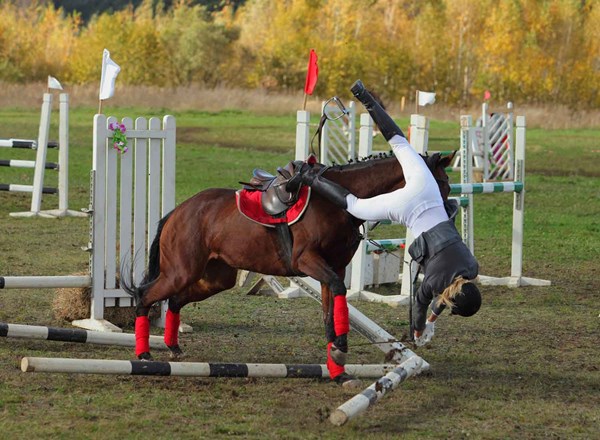 Credit: Thinkstock
Credit: ThinkstockEquine herpesvirus type1 (EHV?1) is a growing concern in the horse industry. This virus can live within horses for a long period of time, perhaps even throughout their entire life, making it a common disease in the population. Up to 90% of horses are infected with EHV?1 by the time they are 2 years old. Generally, the virus lies dormant in the tissues and doesn’t cause problems. However, with various stresses, the virus can reactivate and cause illness. There are 3 different forms of the disease: 1) reproductive,(2) respiratory, and 3) neurologic.
The reproductive form of EHV?1 can result in abortions or premature foaling can be seen with no other symptoms exhibited. If a mare aborts her foal, EHV?1 should be considered likely. The mare should be isolated from other horses immediately and a veterinarian should examine the mare to make sure there are no other causes for the abortion and submit tissues for EHV?1 testing. If she is otherwise healthy, the mare does not need further treatment and can be rebred. The prognosis for this form of EHV?1 is excellent. Mares can be expected to carry their next foal normally.
In the respiratory form of EHV?1, adult horses may seem tired, run a fever, lose their appetite, experience weight loss, have nasal discharge, or have a cough. A horse with a fever and nasal discharge should be stall rested away from other horses during the illness and for one additional week after clinical signs resolve. A non-steroidal agent such as Banamine can be given to ease the fever. Antibiotics are not generally required but close attention should be paid to make sure the horse doesn’t become dehydrated or develop a secondary infection. Most horses recovery fully within a few days to weeks.
Horses with the neurologic form of EHV?1 often become acutely ataxic (i.e., stumble around as if drunk), seem weak, become unable to urinate on their own, and may “dog?sit” on their haunches. This form of EHV?1 is much harder and more expensive to treat. Most horses need to be hospitalized as care needs can be extensive and because the horse’s health can change quickly. IV fluids are often necessary, and medications may need to be given frequently. Common medications include: NSAIDs for fever and pain, steroids to decrease inflammation and antivirals to help combat the virus. Most horses need to have their bladder catheterized and may need feces removed manually. If the horse loses the ability to stand, sling support is needed or the horse may develop severe muscle injury. This form has a variable prognosis. Some horses return to health with minimal problems. More severely affected horses that have been down for 24 hours or longer have a guarded to poor prognosis. Up to 30% of horses die or are euthanized as a result of this form of EHV?1.
Since EHV?1 typically presents as a disease outbreak, other horses on the farm may also be affected by one of the three forms of the disease. Minimizing transmission and outbreaks is the best way to prevent EHV?1 from causing illness in horses. New horses should be quarantined for a minimum of 30 days in a separate barn or paddock. Pregnant mares should be vaccinated at regular intervals during their pregnancy with a killed vaccines Most herpes vaccines are modified live vaccines and should not be used on pregnant mare. Pregnant mares should not be housed with competition horses or horses traveling off site to minimize the risk of exposure to new strains of EHV?1. Horses exposed to other horses through the show circuit or other venues should be vaccinated to decrease the likelihood and severity of the respiratory form of EHV?1. Unfortunately, there is no vaccine for the neurologic form of EHV?1. Finally, when traveling, check for equine herpes alerts in the area so you can apply appropriate monitoring and take extra precautions on your return.


